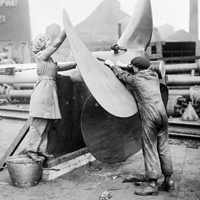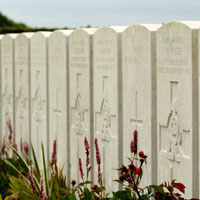The Photographic Collection
search/browse the collection
Introduction
During the First World War there were three main categories of photographer: official, press, and amateur. The role of official photographers was to compile authorised material to document the conflict both on the home and Western fronts. Official photographers were integrated into the army, often given commissioned status, and whilst the release of photographs was subject to both military and civilian censorship, they were guaranteed a wide distribution in the home press and in propaganda material, as well as providing official military records. Britain only had 16 official War photographers but at least one was attributed to each theatre of war and one to the Home Front.

Press photography was rigorously restricted, especially on the Western Front. Photographers had greater freedom in places such as Egypt and Mesopotamia. Circumscribed from the major theatres of war press photographers turned their attention to civilian activities in the war effort. Although still faced with strict regulations, their photographs provide telling evidence of the growing participation of women throughout the period. During the First World War news photography was still an unfamiliar phenomenon. The press was a conservative industry, and the publication of photographs was largely associated with the lower end of the market. Unlike the records of today's conflicts, the First World War was largely represented by the medium of words with few visual representations of the theatres of War.
The amateur photographer perhaps provides one of the most interesting visualisations of the First World War. Soldiers were allowed to take a small personal camera with them on active service. How much they could use it depended on where they were and the views of their commanding officers. Private cameras were likened to the keeping of diaries thus providing a possible security risk and a number of regiments banned them altogether. However, given the small number of official photographers and the severe restrictions placed on the press, when the role was offered the amateur photographer could provide and important and unique personal account of War.
When looking at photographs of this period it is important to consider that limitations in the photographic equipment of the time meant that action photography was extremely difficult. It was not until the advent of the 35mm camera in the 1920’s that action photography became a part of documenting conflict. Field cameras could be cumbersome and often had to be tripod mounted. For some equipment glass plates had to be treated with chemicals on the spot and developed instantly in a mobile darkroom. Recent advances in photography meant that single plate folding handheld cameras were available making photography more mobile, but photographers were still limited by the number of glass plates that could carry. As a result many of the photographs we see of the First World War today are staged poses or taken during the relative safety of training exercises. Despite this the photographs of the First World War offer an extraordinary account of the conflict, the individual experience, and the changing medium and politics of photography.
| Author | Kate Lindsay |
|---|---|
| Sources |
|
Search the Photographic Collection
Browse by keyword
- Allied Forces
- Arab Irregulars
- Armistice
- Arras
- Battle
- Casualties of War
- Central Powers
- Commemoration
- Fighting Men
- Gallipoli
- Gas Warfare
- Group
- Home Front
- Imperial Forces
- Landscape
- Medical
- Middle East
- Military Punishment
- Munitions
- Passchendaele
- Portrait
- Propaganda
- Somme
- The Mediterranean
- Transport
- Trench
- War
- War at Sea
- War in the Air
- Western Front
- Women
- Ypres


